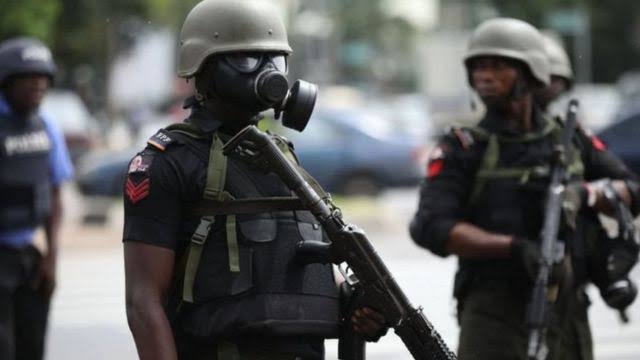The 1994 genocide in Rwanda resulted in the killing of approximately 800,000 people, mostly Tutsis, by Hutu militias and government soldiers (BBC 7 Apr. 2014; UN 23 Jan. 2014). The involvement of members of the Roman Catholic clergy in the genocide has been documented by several sources (RNS 5 Jan. 2008; IWPR 1 Dec. 2006; BBC 20 Sept. 2004; The New York Times 12 May 2002; ibid. 10 June 2001). While some priests and nuns offered protection and stood up to Hutu “death squads,” there are also accounts of certain members of the clergy being complicit in the genocide (ibid.). Several Roman Catholic clergy members have been indicted and convicted for genocide and crimes against humanity (IWPR 1 Dec. 2006; UN 16 Feb. 2006; BBC 20 Sept. 2004; The New York Times 10 June 2001). This article provides a brief overview of some of these cases.

Cases Of Roman Catholic Clergy Members Involved In The Genocide
Jean François Kayiranga And Edouard Nkurikiye
In 1998, a gacaca court sentenced two Rwandan Catholic priests, Jean François Kayiranga and Edouard Nkurikiye, to death after finding them guilty of “genocide and complicity to genocide” (CNN 18 Apr. 1998). The two priests allegedly encouraged approximately 2,000 Tutsis to seek refuge in their church in Nyange before it was attacked by Hutu militias. The priests reportedly then had the building bulldozed with the bodies inside.

Augustin Misago
In 1999, Rwandan bishop Augustin Misago was arrested and brought to trial in Kigali on charges of genocide and crimes against humanity (BBC 20 Aug. 1999; ibid. 15 June 2000). Misago was accused of failing to protect Tutsis in his church and was also thought to have close ties to the Hutu authorities, including those involved in leading “death squads.” In 2000, he was acquitted of the charges.

Guy Theunis
In 2005, a Belgian Catholic priest, Guy Theunis, was arrested for his alleged complicity in the 1994 genocide (BBC 27 Sept. 2005; RSF 9 Nov. 2005; Freedom House 2007). Theunis, the first foreigner to appear before a gacaca court, was accused of inciting killings by publishing certain articles in a magazine that he had edited. However, the priest’s supporters, including the non-governmental organization (NGO) Reporters Without Borders (Reporters Sans Frontières, RSF), contend that he was imprisoned for exposing human rights abuses committed by the ruling Rwanda Patriotic Front (RPF). Following negotiations between the Rwandan and Belgian authorities, Theunis was repatriated to Belgium, where he was to be tried.

Thaddée Ntihinyurwa
In 2005, Archbishop Thaddée Ntihinyurwa, the head of the Roman Catholic Church in Rwanda, appeared before a gacaca court in southern Rwanda to answer questions regarding his alleged participation in the genocide. Archbishop Ntihinyurwa was accused of being a member of a “death squad,” and of ordering approximately 600 people from a church into a soccer stadium, where they were killed by Hutu militia and government soldiers. Sources consulted by the Research Directorate do not indicate whether the Archbishop was charged or convicted for his alleged involvement in the genocide; however, as of December 2007, the Archbishop was still preaching at St. Michael’s Cathedral in Kigali.

Athanase Seromba
In 2006, the ICTR sentenced Catholic priest Athanase Seromba to 15 years in jail for his role in the 1994 genocide. The Tribunal found Father Seromba guilty of organizing the killing of over 2,000 Tutsis in western Rwanda. The Tutsis were reportedly taking refuge at a church that the priest had ordered bulldozed.

Wenceslas Munyeshyaka
In 2006, a Rwandan tribunal sentenced Roman Catholic priest Wenceslas Munyeshyaka to life in prison for his role in the genocide. Father Munyeshyaka, living in France in 2006, was tried in absentia; he was found guilty of committing rape and assisting Hutu militiamen in the genocide. In 2007, the French authorities arrested the priest on an international warrant issued by the ICTR; however, he was released a month later after a French court of appeals found that the warrant “could not be executed.”

Hormisdas Nsengimana
In 2007, the ICTR indicted another priest, Hormisdas Nsengimana for the following counts: genocide; conspiracy to commit genocide; crimes against humanity for murder and extermination; and collaboration for ordering college students to cooperate with Hutu militiamen. Information on the outcome of this trial could not be found among the sources consulted by the Research Directorate.

Other Roman Catholic Clergy Members Convicted For Their Alleged Involvement In The Genocide
Other Roman Catholic clergy named in the media who have been convicted for their alleged involvement in the 1994 genocide include: Father Laurent Ntimugura; Father Emmanuel Rukundo; Sister Theophister Mukakibibi; Sister Julienne Maria Kizito; and Mother Superior Gertrude Mukangango.

Allegations And Accusations
There are allegations that some Hutu priests charged for their involvement in the 1994 genocide “either fled [Rwanda] or washed the blood from their hands and continued preaching.”
Several sources have implicated a number of members of the Roman Catholic clergy in Rwanda in the country’s 1994 genocide. There are reports of priests and nuns offering protection and standing up to Hutu “death squads.” However, there are also accounts of certain members of the clergy being complicit in the genocide, and there are allegations that some senior clergy members were closely connected to those who planned the genocide or remained silent during the killings.
In conclusion, several members of the Roman Catholic clergy in Rwanda have been implicated in the 1994 genocide, with some being indicted and convicted for their involvement. While some priests and nuns offered protection and stood up to Hutu “death squads,” others were complicit in the genocide. The involvement of members of the Roman Catholic clergy in the genocide remains a contentious issue in Rwanda.

